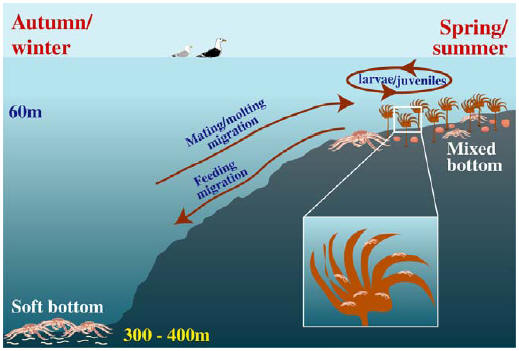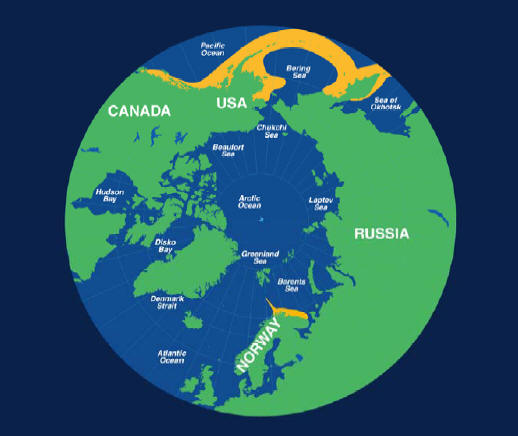Habitat and Geography
The geographical distribution of the P. camtschatica ranges from the Sea of Japan to the northern coast of British Columbia.1 Their native distribution is along this line from Korea to Japan, Russia, Alaska, and Canada. The red king crab species was also introduced to the Barents Sea in Russia during the 1960ís to create a new fishing source there. Since then, the crab species has moved down the Russian coast to Norway and also to the Kola Pennisula.2
The P. camtschatica can be found in habitats of salt water or marine, temperate and polar environments. The habitat of the red king crab also depends on what stage of life the crab is in. The crab larvae settle in shallow coastal zones, coordinated with the spring phytoplankton and zooplankton supply. Survival of the larvae in any habitat depends on favorable habitats, where both food and cover (protection from predators, rocks, stones, crevices, and etcetera) exist; for the larvae are solitary and vulnerable.
 At about the age of 2, the red king crab moves to deeper water (20-50m) where
podding takes place, where large amounts of king crab all bunch together in a
tight, highly concentrated group.3
At about the age of 2, the red king crab moves to deeper water (20-50m) where
podding takes place, where large amounts of king crab all bunch together in a
tight, highly concentrated group.3
Adult crabs are found at even lower depths at around 200m, living in the sand and muddy floor substrates.4 Adults have 2 migratory habitats, the first in the spring in where they leave the depths to shallow waters for mating, molting, hatching, and spawning. Female crabs may hang around the kelp during this time because during the mating season, females molt, loosing their protective covering. Kelp then provides the female with some protection, hiding her from predators. The second migration is during the summer and fall, where they go back to depths at 200m or below after the mating season is over. Here, males and females form separate aggregations for what is left of the year.5
